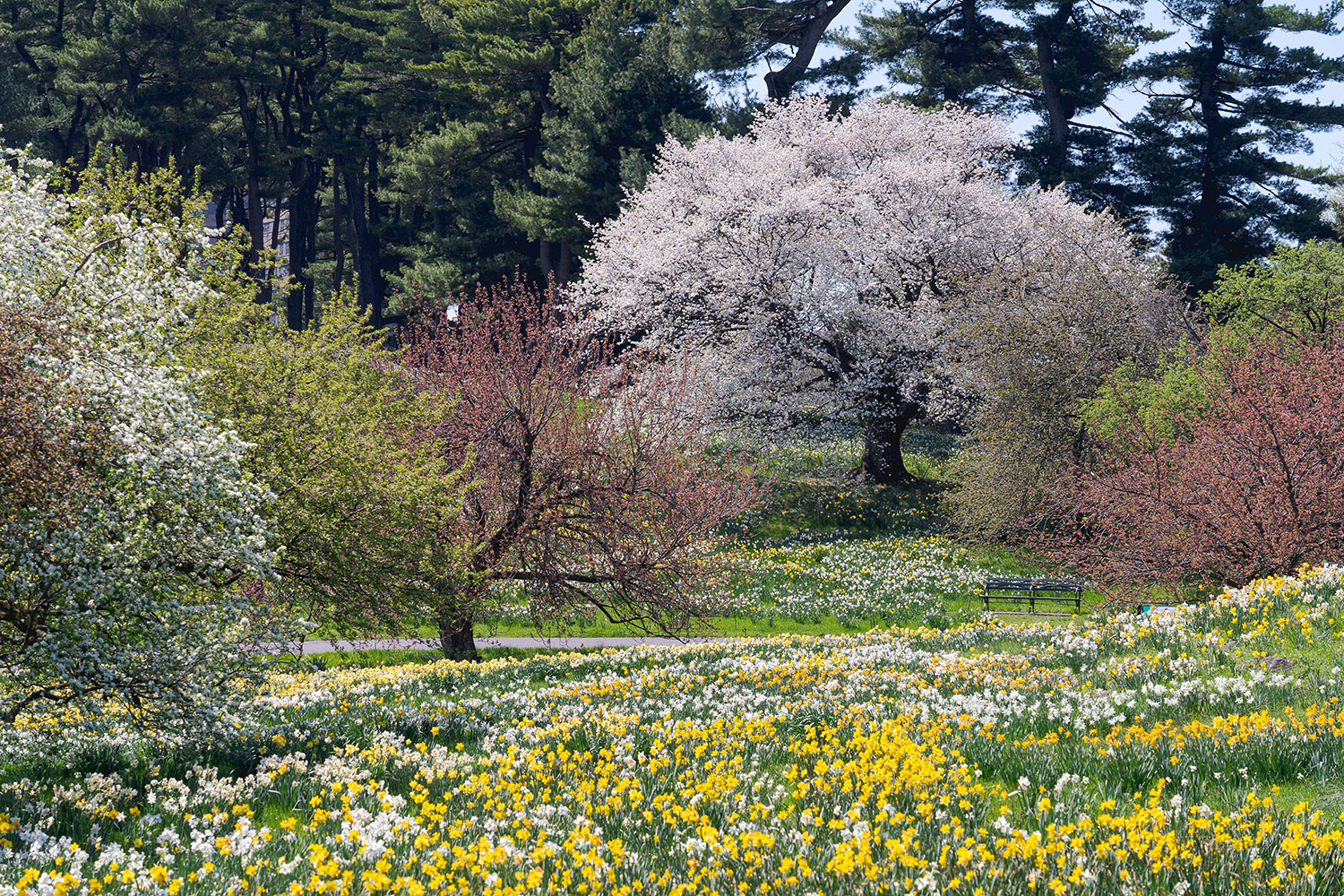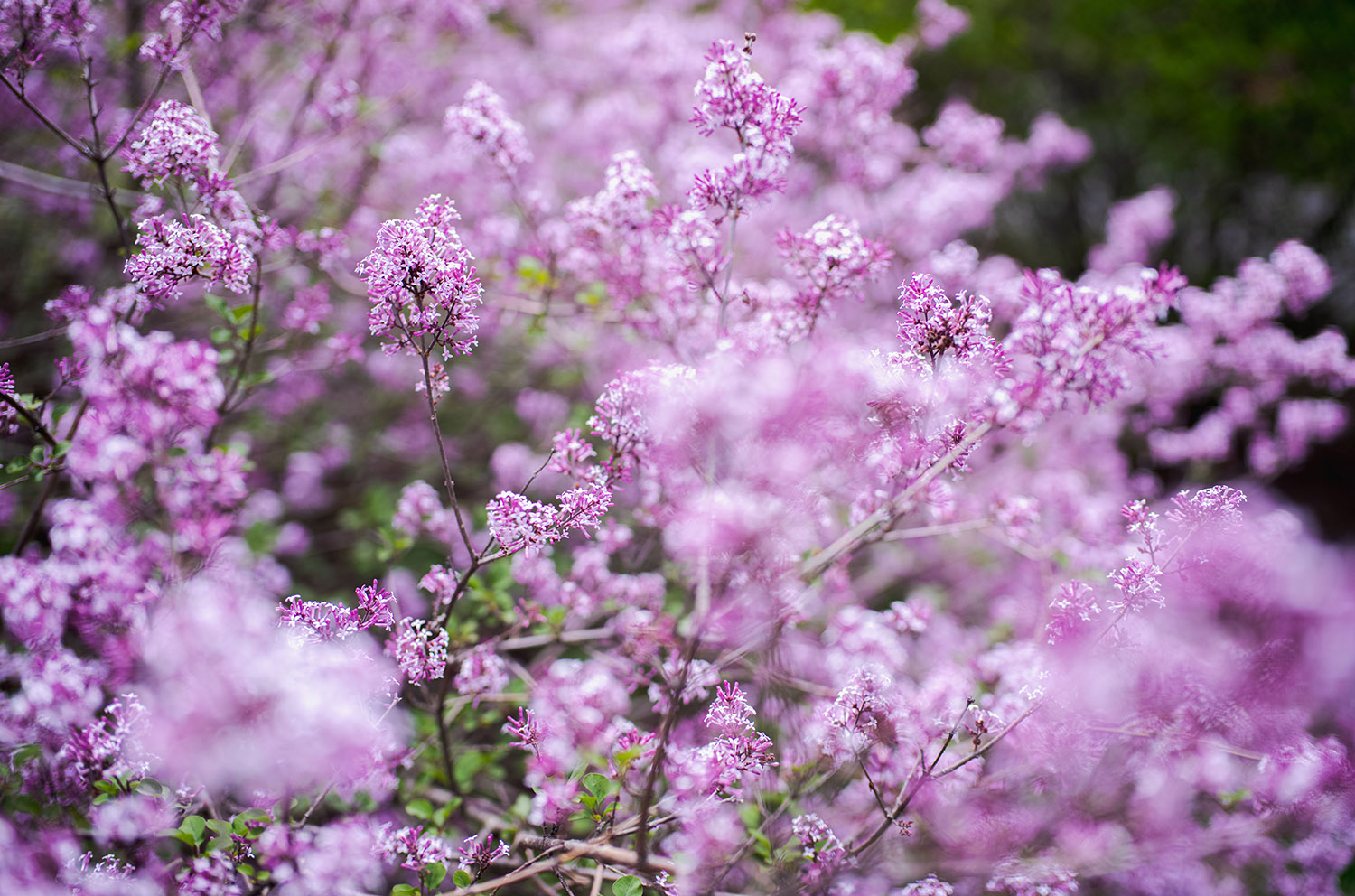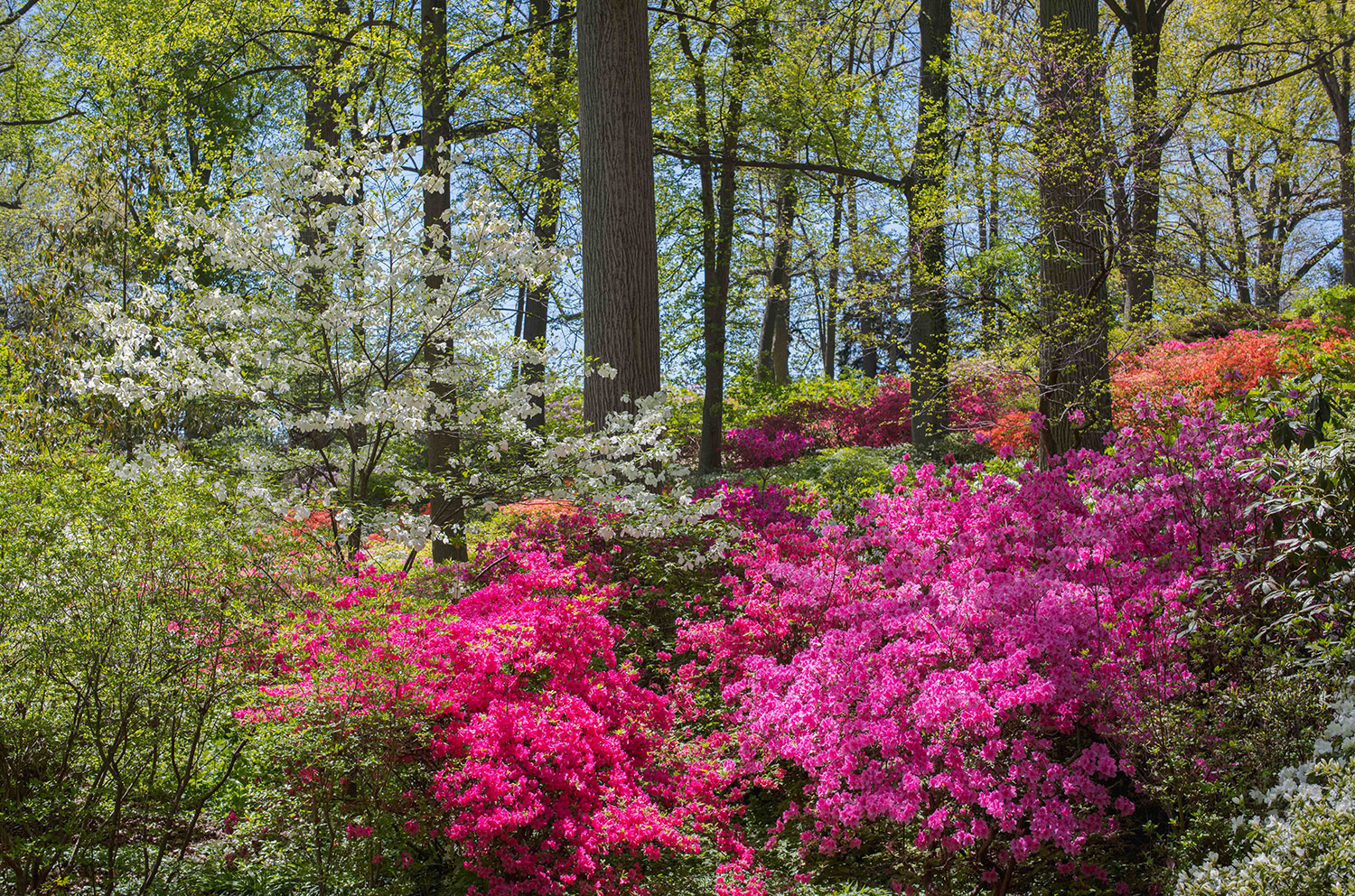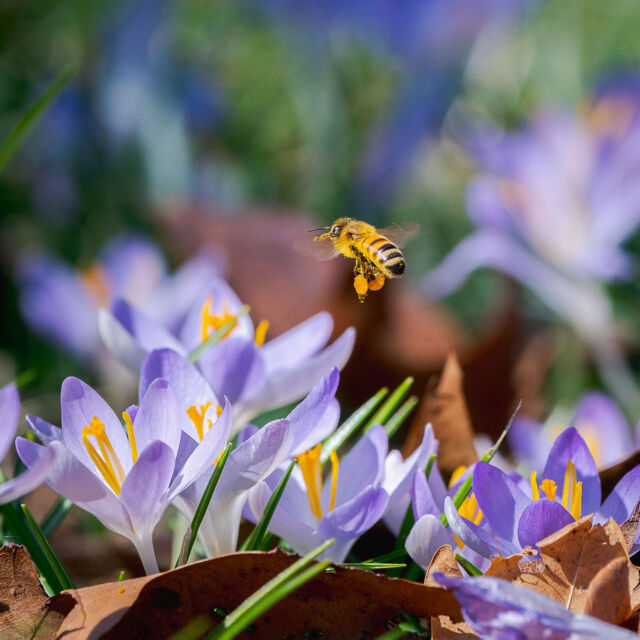Flowering Frustration
Todd Forrest is the Arthur Ross Vice President for Horticulture and Living Collections at The New York Botanical Garden.
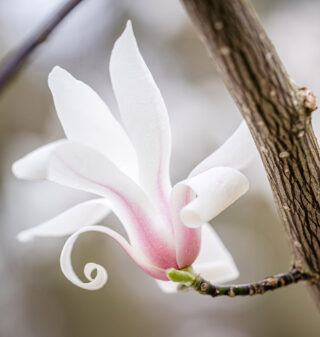
Magnolia zenii
We at NYBG start getting antsy for spring early. Once the last russet oak leaf in the Thain Family Forest floats to the ground in December, we begin to obsess about the spring bloom calendar. For us, spring does not begin on March 21, it begins when the charming little white flowers of snowdrops carpet the ground in the Chilton Azalea Garden and the fragrant flowers of witch hazels reflect the late winter sunlight, which grows daily in intensity and duration. This is typically around mid-February, but in a long, cold winter might be as late as early March. As days lengthen, more and more of our plants start popping into flower: winter jasmine, Japanese apricots, camellias, paper bush, and Adonis amurensis in the Ladies’ Border; crocus, cyclamen, and reticulate iris in the Rock Garden; Korean rhododendron and Narcissus ‘February Gold’ in the Azalea Garden; Corydalis in Seasonal Walk; winter-hazel along Garden Way; squill in the Perennial Garden. There is no turning back once the Magnolia zenii in the Magnolia collection opens its snow-white flowers—spring has launched.
By about the vernal equinox, we start getting questions from our families, friends, colleagues, and even new acquaintances who learn where we work. When will the magnolias flower? When should I visit Daffodil Hill? The Azalea Garden? The Rock Garden? The Tree Peonies? The Lilacs? Much to the consternation of our inquisitors, we often give vague answers—we hedge our bets. The simple answer is, we can’t really be sure that far in advance. We can provide educated guesses, estimates based on years of observation.
- Daffodil Hill
- Syringa 'Red Pixie' in the Burn Family Lilac Collection
- Chilton Azalea Garden
The flowering calendar is slightly different every year depending on a variety of factors. How cold was the winter? How long was the January thaw? Did it snow? Are the plants you want to see native to New York? Are they from southern Europe? Northern Asia? Western North America? Were they planted last year or have they been around for a while? Even when things start blooming, the weather today, tomorrow, and next week will impact the duration of bloom. While on average, our spring-flowering collections flower at relatively predictable times, flowering times can vary wildly from year to year. The impacts of climate change have made things even more difficult to predict with confidence.
2023 has been particularly hard to nail down bloom-calendar wise. We had one of the warmest winters on record, with only one appreciable snow event, and several days in January and February when temperatures reached 60° F. The ground never froze, which is unusual for us in New York, even during the climate-changed Anthropocene. Plants in our collections native to regions with climates more temperate than ours started to wake up early. The furry gray buds of the saucer and star magnolias began to swell in February and got fatter with every warm spell. We worried that they would be destroyed by March frosts. This happened last year and our saucer magnolias never flowered at all. By early-March, our flowering sequence was tracking about two weeks ahead of “normal.”
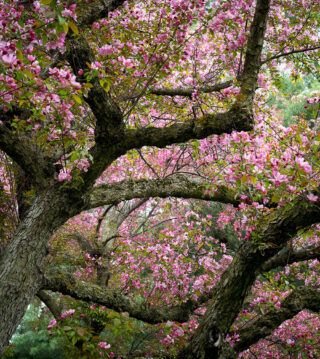
Malus ‘Makamik’
Fortunately, cool weather returned in March, and everything slowed down a bit. The saucer magnolias were spared and our astonishing spring sequence started, albeit a week or so earlier than their long-term average. Daffodil Hill, which typically reaches peak bloom during the third week of April, peaked by about April 11. Our crabapples, which typically start flowering as the daffodils begin to fade, were fully open by tax day. Even early-flowering native plants like red maple and American elm are more than a week ahead of schedule this year. A series of days during the second week of April with temperatures in the mid-to-high 80s pushed everything along. Lilacs, which typically reach their peak by last week of April or first week of May, were in full flower April 19 and the tree peonies, an early May stalwart, were starting to flower at the same time.
What does this mean for the rest of spring 2023? It means that the Garden has been lovely for several weeks and will be lovely into June and beyond. This is because over many decades, our curators have developed NYBG’s living plant collections to include early-season, mid-season, and late-season varieties of daffodils, cherries, magnolias, lilacs, azaleas, herbaceous peonies, and too many other spring flowers to list. These collections don’t have one peak: they have several, and as the flowers in one collection wane, those in another wax. Our gardens, including the Perennial Garden, Rock Garden, Azalea Garden, Native Plant Garden, Seasonal Walk, and Home Gardening Center have been designed and planted to provide flowers for months on end. Even the Peggy Rockefeller Rose Garden, which typically reaches peak bloom in the first week of June, will produce flowers throughout the summer and into the fall, finishing only when the last rose succumbs to a hard frost. The beauty of The New York Botanical Garden is that there is always some beautiful and fascinating plant to see and enjoy.
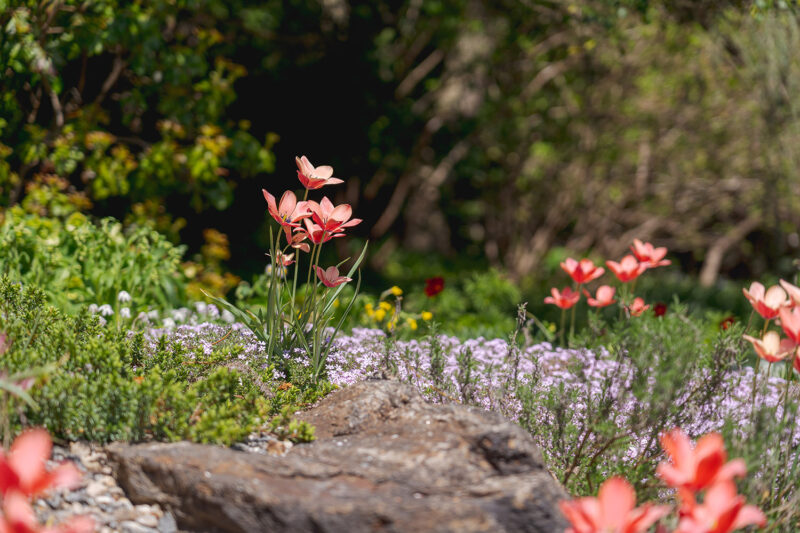
Tulipa ‘Annika’ in the Rock Garden
What will next year bring? The only thing I know for certain is that there will be flowers somewhere here from January to December. If pressed to reveal the absolute best time to see the Garden in spring, I will advise picking a day between around mid-February and mid-June that is warmer than expected but cool enough to be comfortable. Don’t be put off by a light rain or a little snow. I guarantee if you allow yourself to enjoy what you see that day, you will not miss what you didn’t.
SUBSCRIBE
Enter your email address to subscribe to this blog and receive updates on new posts.
